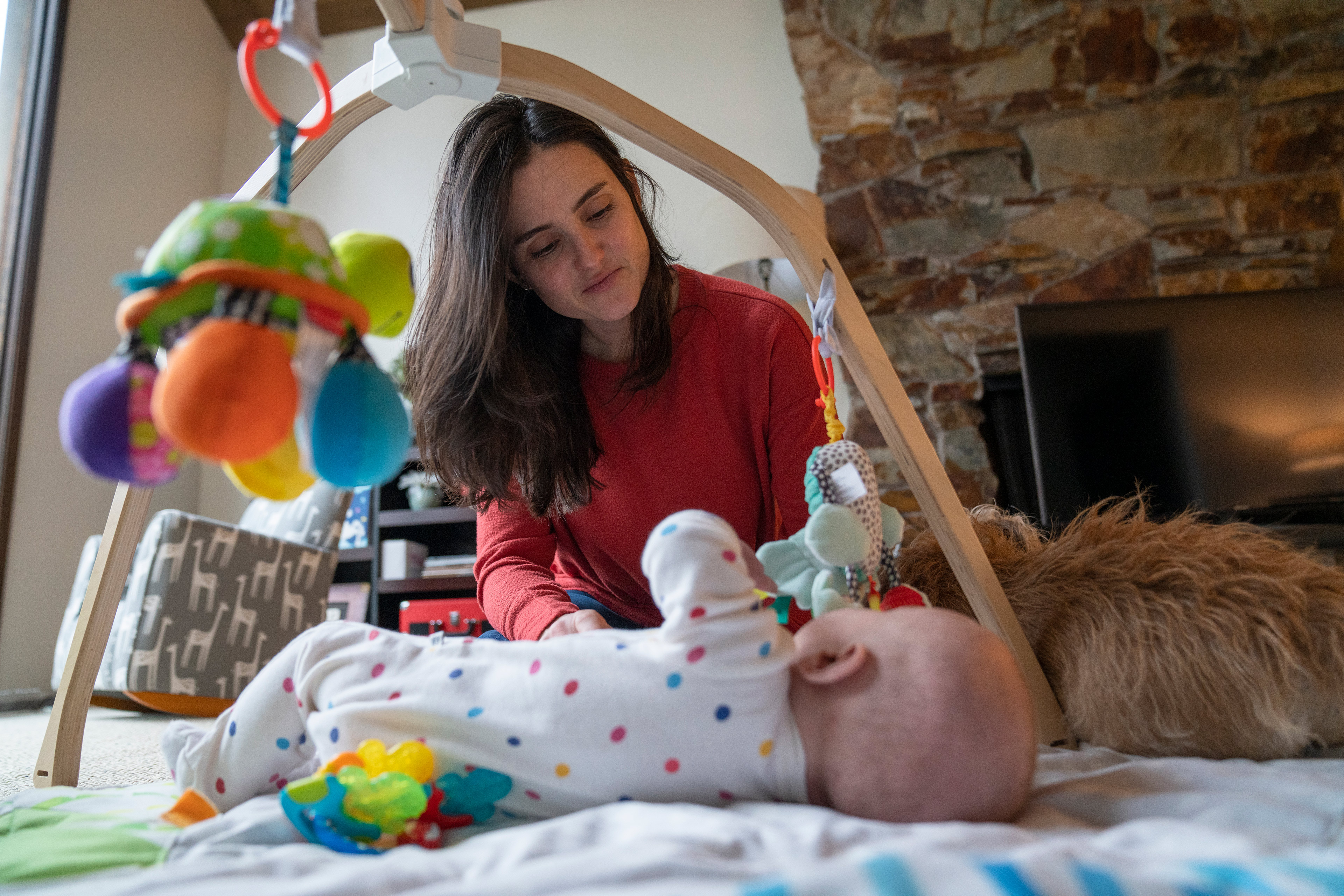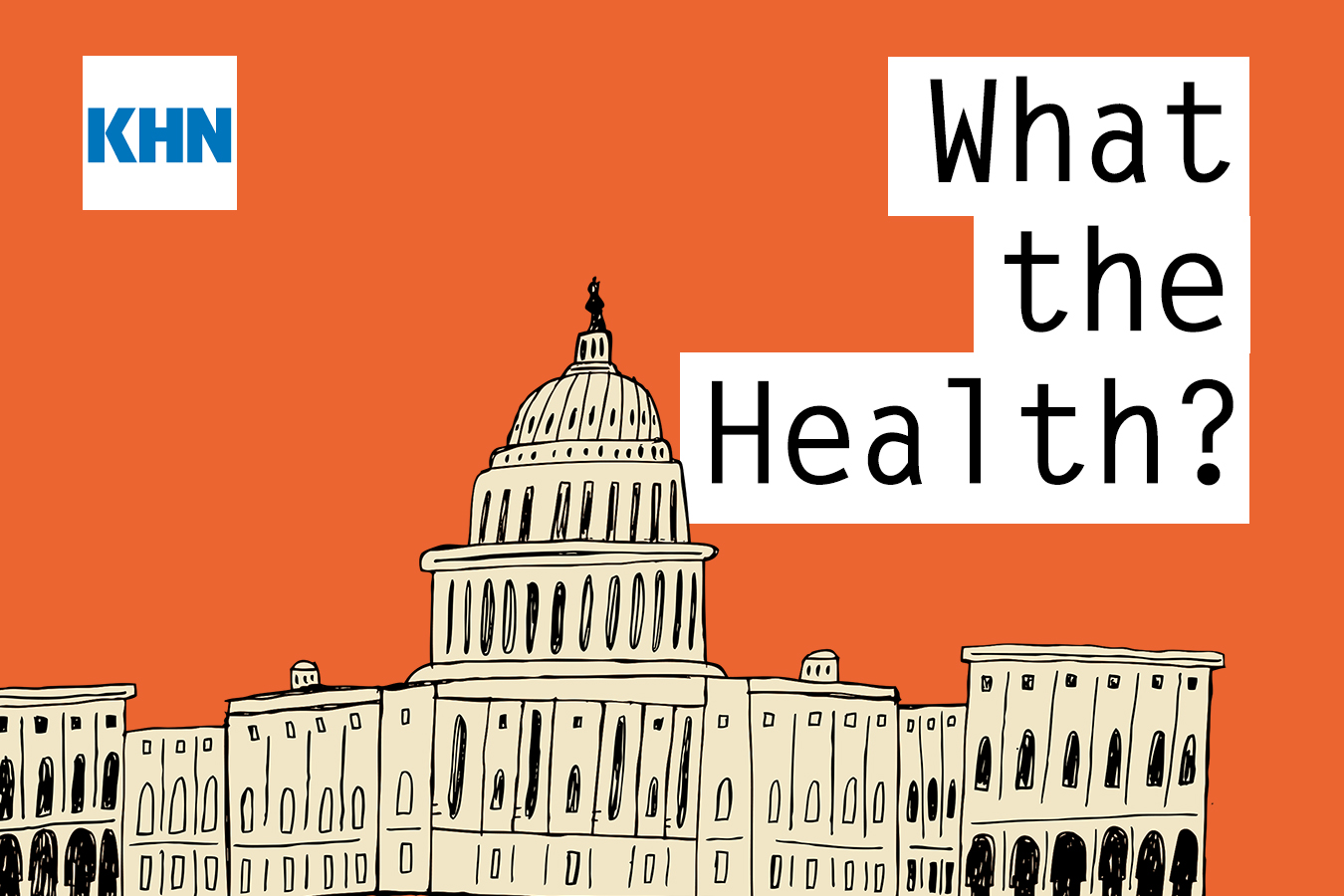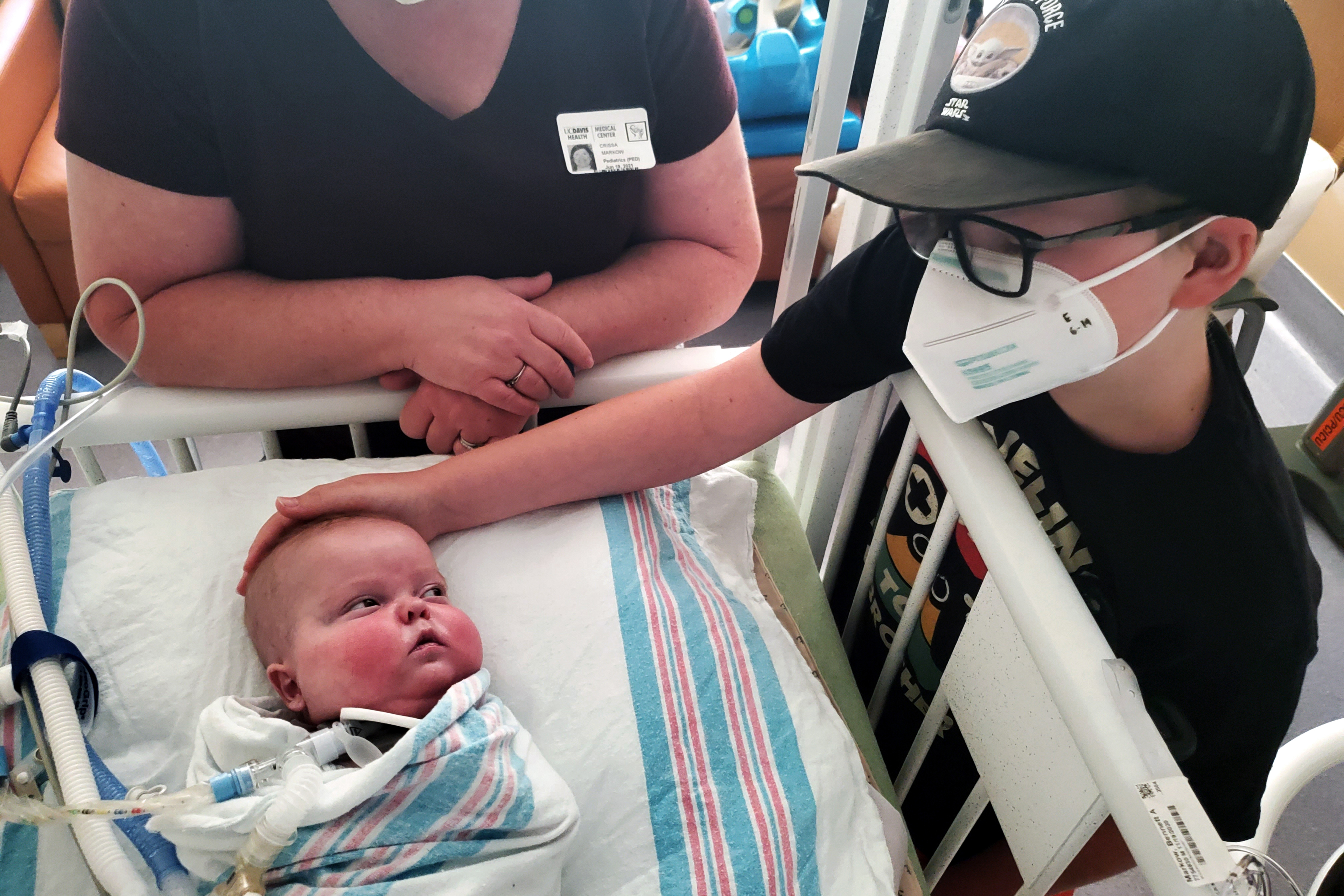Letters to the Editor is a periodic feature. We welcome all comments and will publish a selection. We edit for length and clarity and require full names.
On a ‘Woke’ Journalist’s Journey
I found Jay Hancock’s piece rather intriguing (“Severe Sleep Apnea Diagnosis Panics Reporter Until He Finds a Simple, No-Cost Solution,” Oct. 3). While I agree that positional therapy is often overlooked as a first-line treatment for obstructive sleep apnea, one has to look at this serious, life-threatening health issue in a bit more detail. First, Mr. Hancock’s diagnosis was central sleep apnea, which suggests either a neurologic and/or breathing control etiology. Sleeping on the side may prevent airway obstruction, but the underlying cause has likely not been addressed. Second, the danger here is that — a bit like hypertension, with which there are little or no perceived symptoms — a catastrophic event might occur with little or no warning. Third, it sounds as if the positional therapy in this case alleviated the condition — but as one gets older, the condition will likely worsen.
Bottom line: Why does this particular patient have this condition and what can be done to address the root cause instead of taking a symptomatic approach? My fear is that, left untreated, the patients fall asleep with a false sense of security to never wake up the next morning.
— Dr. Dave Singh, an adjunct professor in sleep medicine at Stanford University, Oakland, California
— Liz Beaulieu, Yarmouth, Maine
Finally! Jay Hancock exposed the sleep apnea medical racket. I have another treatment option: During covid, many inpatients were intubated in the prone position. I was curious about that and did some Googling. Not only does sleeping on your stomach increase lung capacity, the gravity on the throat is a natural treatment for sleep apnea. While difficult to adapt to, it’s better than a CPAP. Again, doctors don’t mention it. No money in a simple gravity solution.
— Peg Keohane, Syracuse, New York
— Stanley Morrical, San Francisco
I want to thank you for this very timely article. I have suspected there was more to the question of apnea than was being reported. As stated, it is a big industry that perpetuates the idea that everyone is affected.
The reporter’s discovery that side-sleeping is the answer is absolutely valid, as I determined long ago. The article should be widely disseminated as it is of extreme importance to millions who are falling for the hype!
— Lawrence Dee, Chino Valley, Arizona
— Robert Roy Britt, Phoenix
My mouth dropped open when I read Jay Hancock’s piece about sleep apnea. You are the harbinger of a tidal wave, my friend. The party is just getting started.
Empowered Sleep Apnea is a project we created to protect individual patients from the “conveyer belt” of the American health care system, as it’s poised to deal with tens of millions of new diagnoses of sleep apnea, which will soon be made in primary care and dental offices all over our great land, using automated, wearable technology. That time is coming within 18 months.
You suffered because there was inadequate coaching for a terribly complicated disease. Simple as that. All those who will be subjected to a cloudburst of automated diagnostics will have the same journey to make. Out of necessity, your solution was to slog through your own research to get yourself some sane direction. You empowered yourself. Good on you.
My solution was to take my life’s work as a patient-centered sleep medicine physician and turn it into something beautiful to behold, so that everyone can benefit from sane coaching. Our project hinges on patient empowerment. Our website is a nice introduction. Our podcast is also a blast that I think your readers would find very interesting.
— Dr. David E. McCarty, owner and CEO of Empowered Sleep Apnea, Boulder, Colorado
— Dr. Art Sedrakyan, New York City
As president of the American Academy of Sleep Medicine (AASM), I write to address several concerns about the recent article “Severe Sleep Apnea Diagnosis Panics Reporter Until He Finds a Simple, No-Cost Solution” (Oct. 3). While I commend the author for seeking medical help for his daytime drowsiness and snoring, I fear his article may mislead readers in a way that could jeopardize not only their own health and safety but that of others as well.
The author is clearly dissatisfied with the care he received; however, using this to suggest that nearly everyone diagnosed with sleep apnea should simply treat it on their own “for free” is dangerous. Sleep apnea is a common and chronic medical condition that increases the risks for numerous physical and mental health consequences, diminished quality of life, motor vehicle crashes, and premature death.
Positional therapy (which typically requires the use of a device to maintain a side-sleeping position), though useful for some patients with sleep apnea, is not the best treatment for most patients, especially those with moderate to severe sleep apnea. Positive airway pressure (PAP) therapy is the best-supported, evidence-based treatment for sleep apnea. The most recent systematic review and meta-analysis included 80 randomized controlled trials investigating the use of PAP therapy to improve outcomes. Millions of patients with sleep apnea can attest to the life-changing — and even lifesaving — impact of PAP therapy. Treatment selection is an important decision that should be made together by a patient and their treating provider.
Furthermore, it is inappropriate for the author to use his experience as justification to malign our entire organization and our 12,000 members. AASM strongly refutes the implication that support from industry biases our clinical practice guidelines and policies. Our guidelines are based on a review of the latest research by a task force of experts who determine the strength of evidence for a given treatment. The AASM also ensures conflicts of interest are mitigated through a stringent clinical practice guideline development process. While the author claims our organization “finances its operations” with industry support, this is simply untrue. Industry support represents roughly 1% of our annual revenue and is guided by a clear policy that helps ensure transparent interactions to prevent undue influence and support public health. Likewise, the implication that our members are prescribing PAP therapy as part of a revenue-generating scheme is fallacious. The vast majority of PAP devices are sold by durable medical equipment suppliers, not by sleep centers or sleep doctors.
I hope that readers struggling to get a good night’s sleep will seek information from credible sources and talk with a trusted health care professional to determine which treatment best addresses their specific situations.
— Jennifer L. Martin, president of the American Academy of Sleep Medicine, Darien, Illinois
— Timothy Noah, Washington, D.C.
I just saw Jay Hancock’s article on my Google feed and read it, as I suffer from serious sleep apnea as well. I’ve received tailor-made mouthguards, so to speak, which appear to work rather well.
But I’ve also been reading books on breathing, starting with “Breath, the New Science of a Lost Art” by James Nestor, and then on to “The Oxygen Advantage” by Patrick McKeown. I realized I was a mouth breather and that that contributes to the apnea problem as well and have since been trying to learn to breathe through my nose at all times — thus far with mixed results, but the subject is very interesting as it pertains to a lot more than just how to get a good night’s sleep.
— Dimitri F. Frank, Málaga, Spain
— James Hughes, Savannah, Georgia
Treating Trauma — Followed by Billing Trauma
I’m an emergency physician who also works at urgent care. While I appreciate patients trying to be fiscally responsible with their choices, the urgent care did precisely the right thing in this case (Bill of the Month: “Turned Away From Urgent Care — And Toward a Big ER Bill,” Sept. 29). Urgent care can typically manage fender benders or other minor accidents, but someone whose airbags deployed and whose car rolled three times and wound up “crushed” up into a tree should always go to the emergency room. The mechanism of such accidents is very concerning and typically justifies a trauma activation and CT scans to evaluate for internal injuries. Urgent care is not equipped to handle patients if they develop life-threatening complications from a severe injury.
— Dr. William Weber, Harvard Medical School / Beth Israel Deaconess, Boston
— James Conner, Kalispell, Montana
This article is missing the perspective of a medical provider. I am a retired board-certified emergency physician with 33 years in the emergency department and more than five years in urgent care and feel the need to address the medical care differences between the ED and urgent care.
I agree with the facts of your article and don’t dispute the financial issues, problems, inequities of the broken system. But there is more to the story.
The knowledge, ability, skill, and experience of the provider are key. The location of care predisposes to the abilities of the provider but doesn’t guarantee them. You may receive excellent to below-average care depending on the provider. I have seen people die from auto accidents that were sent home from urgent care after receiving an evaluation by a general practitioner not trained in trauma. Some ED physicians miss things, but the odds are better that the ED doctor will not miss critical cases.
Conversely, you might get care from an experienced ED physician at an urgent care.
Then there are the personnel and resources provided. If it is a simple “urgent” problem, no significant difference in outcome is likely to result.
There is the dilemma. What is an emergency? This has been argued in Congress: to err on the side of not missing serious problems for which a “prudent layperson” could observe symptoms. So an emergency is what a “prudent layperson” believes it is.
Some of the urgent care centers I worked in turned away “third-party” cases but most didn’t — even within the same hospital-owned urgent care chain. An option would be to offer to pay cash, asking for the cash-upfront price. Difficult to be accurate in predicting the cost ahead of time, but an estimate is not unreasonable. Instead of a low four-figure bill, the family might have turned out to have a low three-figure bill if not referred to the hospital after the urgent care evaluation.
In my experience, I’ve never seen a patient sent from urgent care (owned by or affiliated with a hospital) to the hospital for the sole reason of the hospital billing a second charge. Many patients are sent because they need a higher level of care that isn’t available, such as hospitalization, injectable medications, specialty care, imaging, and “stat” lab work not available.
Sure, the hospital uses the urgent care as a feeder site, but the patient (or the paramedic) gets to choose which hospital to go to, if they have a preference.
Please remember that not all hospitals or urgent cares are the same. Many smaller hospitals do not have some/many specialists required to back up the emergency department. Some urgent cares use primarily general practitioners, while others use only board-certified emergency physicians, nurse practitioners, or physician assistants.
Yes, the system is broken. Per a recent webinar by the California Medical Association: In the past 50 years, the increase in the number of physicians was 2%. Administrative health care personnel increased more than 3,000%. (That includes both the provider and the payer side.)
— Dr. Mickey Kolodny, Palos Verdes Peninsula, California
— Donald Farmer, Woodinville, Washington
After 40 years as a board-certified emergency medicine physician, I believe the article by Sam Whitehead is very misleading. First of all, the patient should never have gone to an urgent care. Had she called 911 as she should have, just because of the mechanism of the crash, she would have been brought to an emergency room. The ER obviously believed two CT scans were needed, which the urgent care would not have been able to provide. The reporter did not dig into the details of the acute trauma care this patient needed — other than understating her post-accident situation, which was self-defined. The author writes as if it is strictly an insurance issue or a way for the urgent care/hospital system to gain patients.
There is no indication of this happening given that the patient needed, by protocol, Advanced Trauma and Life Support (ATLS). By EMS protocol and by malpractice case law, this patient needed a visit to a trauma center emergency room. And the bill is a totally different issue. In other words, the author totally missed the medical issues to overstate and sensationalize billing issues.
— Dr. Anthony F. Graziano, Oconomowoc, Wisconsin
— Kendra Lee, Woodbridge, Virginia
I listened to your story as retold on NPR about a young woman who had a high bill for an ER visit after a car accident. I felt that the story was editorially biased, as it mentioned nothing about the requirements for care for traumatically injured patients. It seemed to recommend visiting urgent care centers instead of emergency rooms. Although less expensive, such facilities generally should not care for patients with serious injuries. Most hospitals require board-certified emergency medicine physicians and have extensive resources whereas an urgent care doctor may not have completed a residency. The “physician expert” in the story clearly had no experience in the care of traumatically injured patients. Having such insight would lend depth to what I saw as a superficial look at a nuanced issue. Clearly the public should be better informed about cost-effective care, but an evaluation after a serious car crash is inappropriate to be sent to an urgent care.
— Dr. Christopher Goltz, Flint, Michigan
A Wealth of WISDOM
Nice article (“Genetic Tests Create Treatment Opportunities and Confusion for Breast Cancer Patients,” Sept. 21). With breast cancer awareness month upon us, I would also point out the existence of the WISDOM study funded by the National Institutes of Health, which is looking at different approaches to using genetic testing to screen women for breast cancer. Check it out at www.thewisdomstudy.org.
— Dr. Daniel Halevy, New York City
— Dr. Cee A. Davis, Winchester, Virginia
On the Birth of Obstetrics Emergency Departments
I was disappointed by your article “Baby, That Bill Is High: Private Equity ‘Gambit’ Squeezes Excessive ER Charges From Routine Births” (Oct. 13). While I recognize that medical billing is often confusing and at times even alarming to patients, I would like to share a few points that I feel were downplayed or omitted:
- The article gives the impression that the obstetrics emergency department, or OBED, is created simply by rebranding an existing process within hospitals. The author neglects to mention that before the OBED, most hospitals did not have OB-GYN hospitalists stationed in-house 24/7 to address emergencies. Prior to the implementation of the OBED, many expectant mothers, concerned that something might be wrong, were not able to see a physician when they visited a hospital emergency room. Instead, they were transferred to the labor and delivery department to be evaluated by a nurse taking instructions over the phone from a physician. If the patient and her baby were in serious distress, it became a waiting game, with the risk escalating every minute she waited for medical attention from her doctor — or any doctor. Hundreds of thousands of life-threatening emergencies are managed each year by OB-GYN hospitalists who staff obstetrics emergency departments.
- Reporter Rae Ellen Bichell seems to have a beef with the practice of hospitals charging for an emergency evaluation when unscheduled pregnant patients arrive at the hospital with medical complaints. Whether we like it or not, that is simply the way that health care works in America. If you show up unexpectedly at a hospital for evaluation of a health concern, you will be treated as an emergency — and you will likely receive a large bill corresponding to the unscheduled care you received.
- The author works hard to establish or imply a causal relationship between the private equity backing of medical staffing companies and the fact that hospitals are billing patients for emergency medical services. However, hospital service providers and vendors have absolutely no control over a hospital’s billing practices. This bit about private equity seems to serve no logical purpose in this article except to make the story appear as a “whodunit,” casting private equity firms in the role of immoral shadow bosses turning a profit at the expense of unwitting expectant mothers, when in fact they play no role in establishing the billing policies that Ms. Bichell incorrectly and perhaps unfairly characterizes as “moneymaking ‘emergency’ events.”
I have dedicated my career to the development and implementation of obstetrics emergency departments in hundreds of hospitals across the U.S., but I am unaware of any hospital turning routine births into moneymaking emergency events as claimed in the title and misleading argument of this article. I stand by my statement — and my sincere belief — that having trained doctors available 24/7 on the labor-and-delivery floor has significantly enhanced the quality of care available to expectant mothers at some of the most challenging and medically consequential hours of their lives.
Thank you for considering my point of view.
— Dr. Christopher C. Swain, Charleston, South Carolina
— Adam W. Gaffney, Boston
Shooting Craps?
Online stock brokerage houses have made all cellphones into “gambling devices” years ago (“Addiction Experts Fear the Fallout if California Legalizes Sports Betting,” Oct. 5). What a load of crap that California gaming would suddenly create new cases of addiction. Stop the crap reports.
— Matt McLaughlin, Carpinteria, California
— Kristina Bas Hamilton, Sacramento, California
Measuring Fat: A Gut Check
Julie Appleby provided useful information on how modern medicine misclassifies patients’ health status through the use of the body mass index (“BMI: The Mismeasure of Weight and the Mistreatment of Obesity,” Oct. 12). She included comments advocating the use of waist circumference (WC, by tape measure in the standing position) rather than body weight to indicate more specifically where the metabolic problems can be found. She’s on the right track, but her article might have gone further to explore alternative, more focused indicators of excess adiposity.
Anatomically, more than 90% of human body fat can be classified into three main depots: gluteo-femoral (hips, buttocks, and thighs) subcutaneous adipose tissue, abdominal subcutaneous adipose tissue, and visceral (inside the abdomen) adipose tissue. Of these three, only the visceral fat is clearly associated with cardiac and metabolic disorders. Increased gluteo-femoral subcutaneous fat has been shown repeatedly to be associated with improved health outcomes. Abdominal subcutaneous fat tends to have neutral, benign effects for most individuals.
What we need is a simple adiposity indicator that can estimate the burden of visceral fat. Three decades of research suggests that a simple measure of the supine sagittal abdominal diameter (SAD, sometimes called the “abdominal height”) predicts poor health better than the standing WC. When persons are in the supine position, their benign, abdominal subcutaneous fat falls to the sides of the midline. For this reason, variation in the SAD, rather than in the WC, is more strongly associated with the variation in visceral fat volume. The SAD/height ratio (SADHtR) is arguably even better than SAD alone. The SADHtR has been shown in the federal National Health and Nutrition Examination Survey (NHANES) to be significantly better than BMI for identifying major cardio-metabolic risk factors, i.e., insulin resistance or serum triglycerides.
There is a simple tool that researchers or clinicians can use to measure the SAD: a low-cost, portable, sliding-beam caliper. Various calipers are available, all of which are less expensive than a high-quality scale. And the calipers are easier to calibrate, too.
Choosing between the adiposity indicators SAD or WC could depend on the method’s simplicity and replicability. Especially among persons with large bellies, the reliability of the standing WC is challenged by conflicts between minimizing tension on the measuring tape and the tape’s tendency to droop unpredictably below the horizontal plane. For the SAD, both the examinee and the examiner can relax as the upper arm of the sliding-beam caliper descends just to the point where it touches the abdomen. No further judgment is required.
— Dr. Henry S. Kahn, Atlanta
— Morgan Harlan, Washington, D.C.
Revisiting the Homelessness Conundrum
To me, there is only one solution to helping our homeless get off the streets and into an environment that is safe, that will provide them with food, medical attention, and security, as well as provide them a means to regain the loss of self-esteem of so many of the homeless (“Sobering Lessons in Untying the Knot of a Homeless Crisis,” June 21). Our military bases could provide all the above, of course, with the permission of the Department of Defense and base commanders. I see so many efforts at trying to utilize hotels, apartment buildings, and the like, that are costing our cities, states, and federal government so much money that really is just a waste of time. We need to show our homeless that our government and all of us really care about them. We need to offer them the opportunity to settle in on a military base. They have the human resources and financial resources to really do something, and in a short period of time. These homeless could even be offered up some tasks to do on the bases. Please support this effort. Thank you for your efforts, too. I think every heart cries when we see this tragic situation on our street, and leaves us feeling helpless and hopeless for them.
— Mike Stalsby, La Jolla, California
— Arielle Kane, Washington, D.C.











